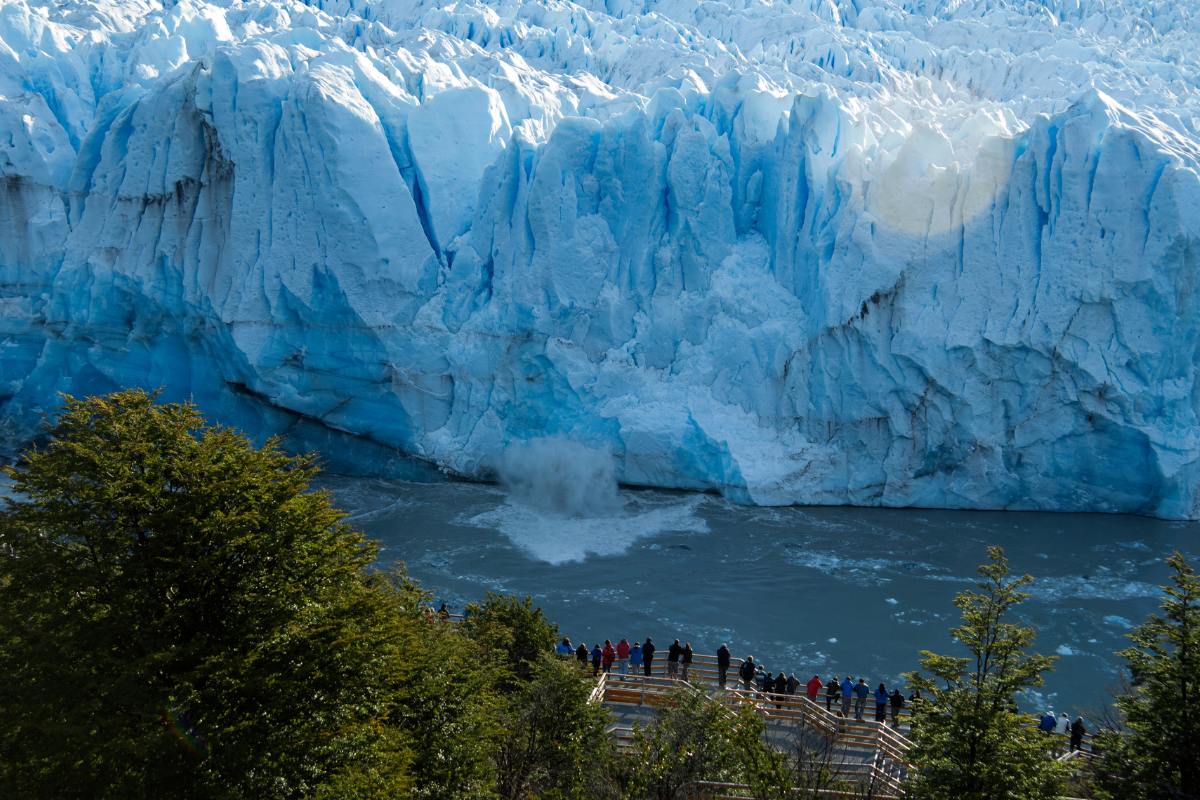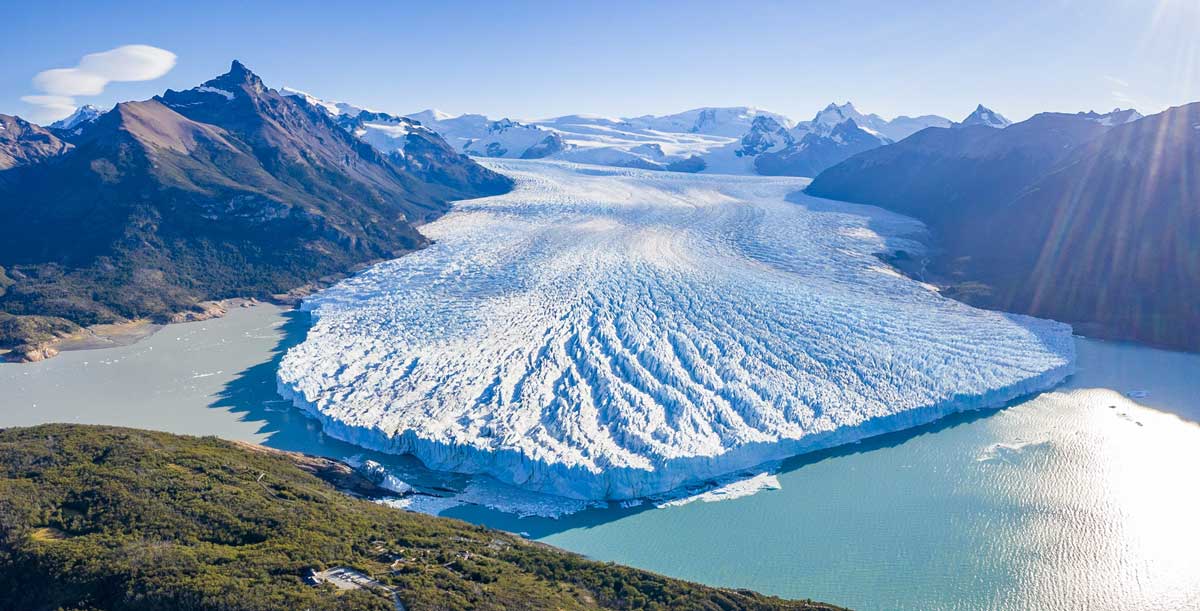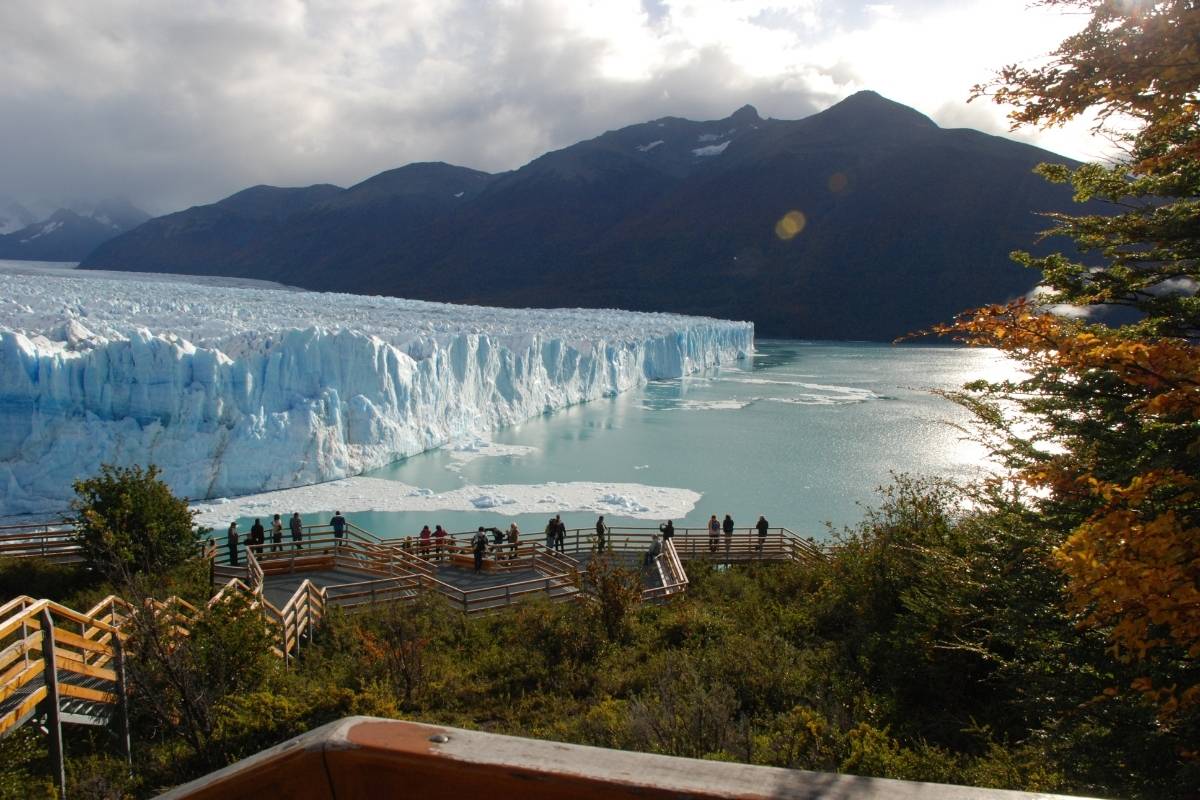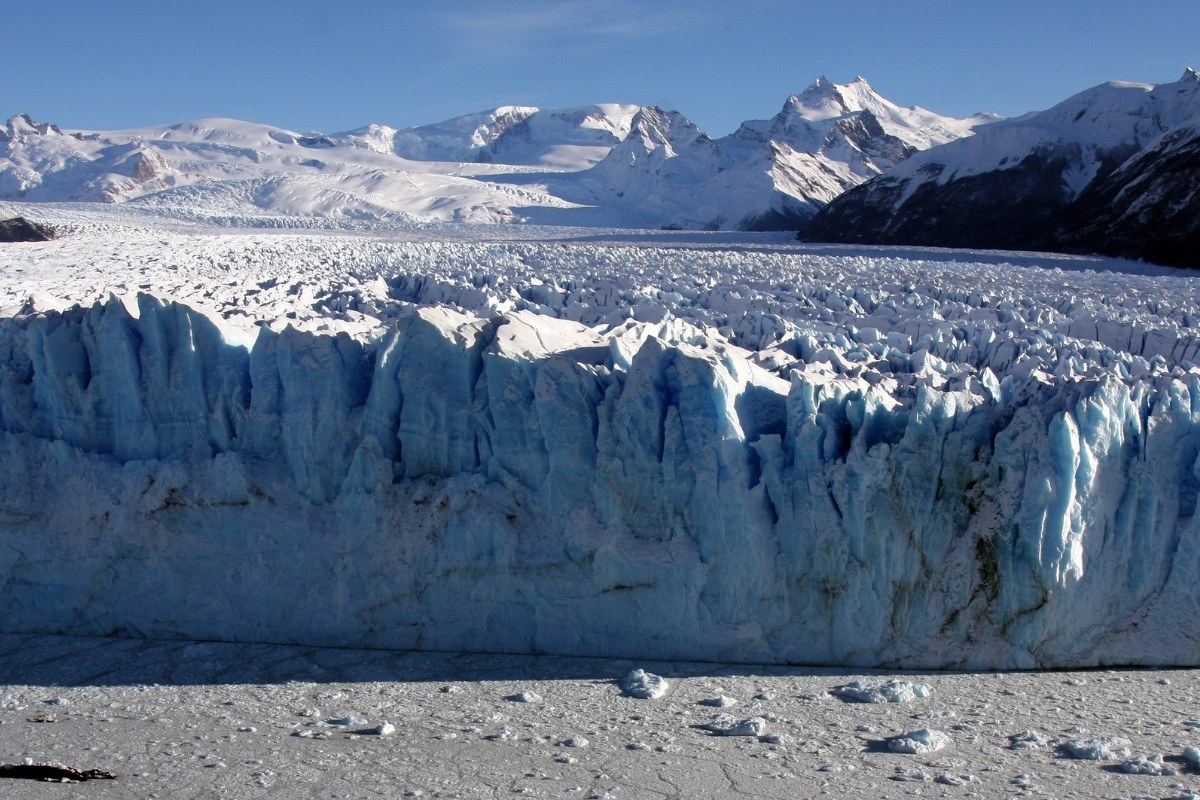Perito Moreno Glacier: The ice giant
Categorías: Blog, El Calafate, Featured Home, useful info

Glaciers are large masses of compressed ice that form over the course of thousands of years. The snow that falls initially accumulates over time in layers. In glaciers there are two zones: the upper part is called “accumulation” of snow and the lower part is called “ablation” where the loss of ice occurs at the end of the glacier.
Perito Moreno Glacier: The ice giant

The Earth experienced several periods of global cooling and warming, the last Ice Age in Patagonia was between 40,000 and 25,000 years ago. These glaciers that we can see today in the National Park are remnants of that last glaciation. Although the planet has already gone through times of increasing temperatures, today this process is accelerated by human activity. That’s why glaciers are retreating faster than they normally did.
Currently, these ice masses form 10% of the total Earth’s surface, being a great source of fresh water on the planet .
Why is the Perito Moreno Glacier so important?
It has tourist relevance due to its easy access and its imposing beauty . Also because a unique natural event occurs there: the moment the ice dam forms followed by the spectacular breaks.
The glacier is born in the Patagonian Continental Ice, which is the largest ice field in the world after Antarctica . The Perito Moreno originates at just 1,500 meters above sea level and the front is located at 200 meters above sea level, making it accessible to visit.

These are some of its general characteristics: the Perito Moreno is 50 km long and descends to Lake Argentino. Its frontage is 5 km and about 60 m high above the water level. The surface of the glacier is 250 km2, a little more than the surface of the City of Buenos Aires.
Although glaciers are receding on the planet, it seems that it continues to advance. What happens is that in the “accumulation zone” in the Continental Ice, large snowfalls are concentrated. In addition, its slope and its semicircle shape surrounded by high mountains mean that it does not lose as much ice in the “ablation zone”. In summary, the glacier accumulates more ice than it melts ; per year it advances between 450 and 700 meters.
The place where visitors come to observe the front of the glacier is called the Magellan Peninsula. When the tongue of ice advances and collides with this coast, it generates a kind of anchor that gives it greater stability. One of the theories is that this anchor works as a “plug” so that the ice brought by the glacier slows down and prevents it from losing volume.

When this phenomenon happens in which the Perito Moreno glacier touches the Peninsula, it generates an amazing spectacle to see since due to the pressure of the water that “plug” begins to break within days, initially forming an arch of ice. So tourists are motivated to visit the glacier during those days so as not to miss the great fall of the ice tunnel .
About his discovery:
In 1834, Robert Fitz Roy’s British expedition reached the mouth of the Santa Cruz River. On board was the young Charles Darwin who joined the feat of going up the river since due to the milky turquoise color of the water they assumed it came from the mountains. Although he was able to corroborate that his theory was correct because he got to observe the snow-capped peaks, he never found out that they were 10 km from the source of the Santa Cruz River and his eyes never saw the largest lake in Patagonia.
Although many people believe that the glacier was discovered by Francisco Pascacio Moreno, who was the expert on the Boundary Commission in Argentina, this was not the case.

In reality, this explorer went up the Santa Cruz River together with Luis Piedra Buena looking for those “big waters” that the Tehuelches described. Finally, in February 1877, he discovered the lake that he named Argentino, a way to establish national sovereignty in this unexplored region. Although they sailed a few kilometers, Perito Moreno never saw these large masses of ice.
Two years later the glacier was finally sighted by Juan Tomas Roger, a British captain belonging to the Chilean Navy, who named it “Francisco Gormaz” in honor of the Director of the Hydrographic Office of the Chilean Navy.
But in 1881 the Boundary Treaty was signed between Argentina and Chile and it was determined that since it was located to the east of the Andes mountain range and its slope towards the Atlantic Ocean, the glacier remained under Argentine sovereignty.
Finally, in 1899, Lieutenant Iglesias of the Argentine Hydrographic Institute would give it that name in honor of this naturalist and explorer who played an important role in defining the limits between Argentina and Chile.
If you still don’t know this ice giant, we have three different ways so you can enjoy the bus excursion to the Perito Moreno Glacier, navigate Lake Argentino to see the glaciers from the water or take the mini-trekking up the ancient glacier.



